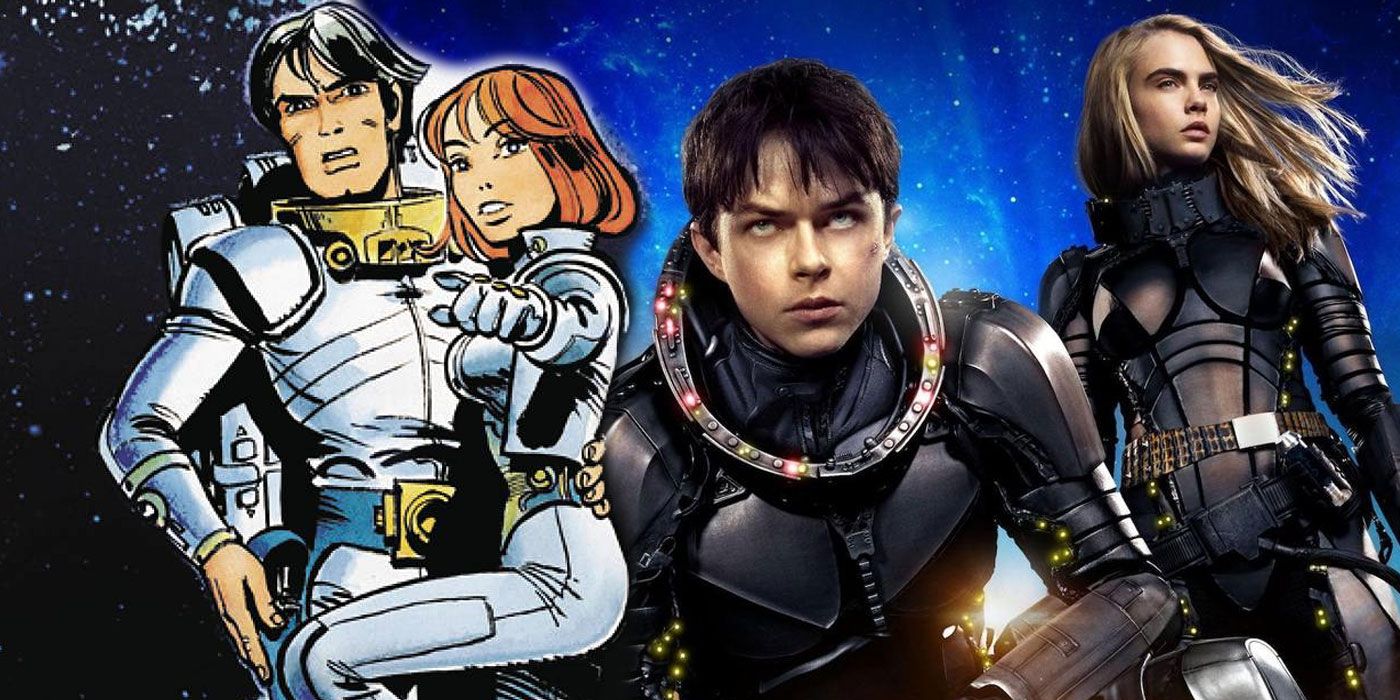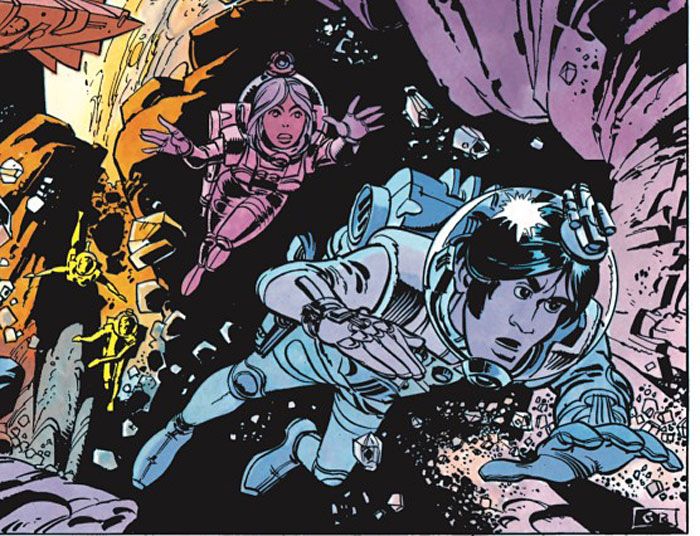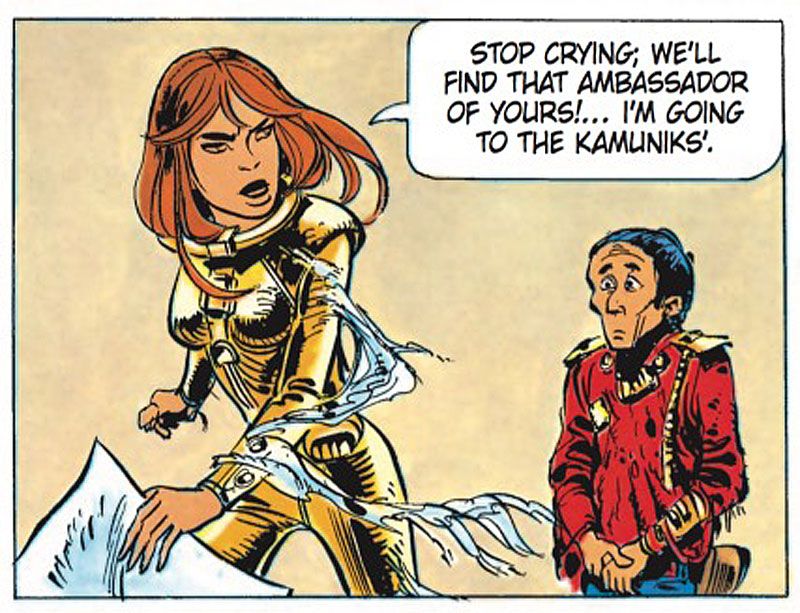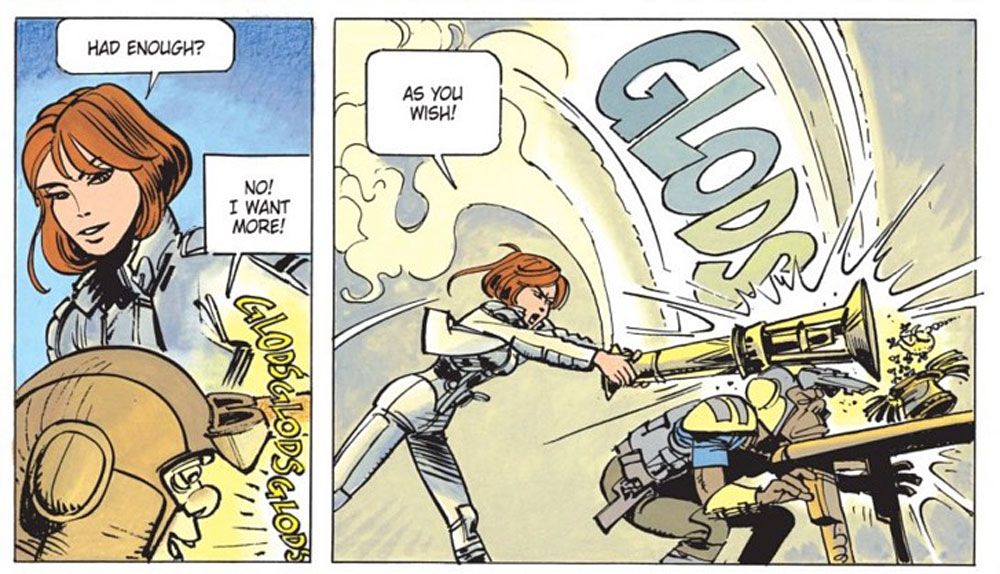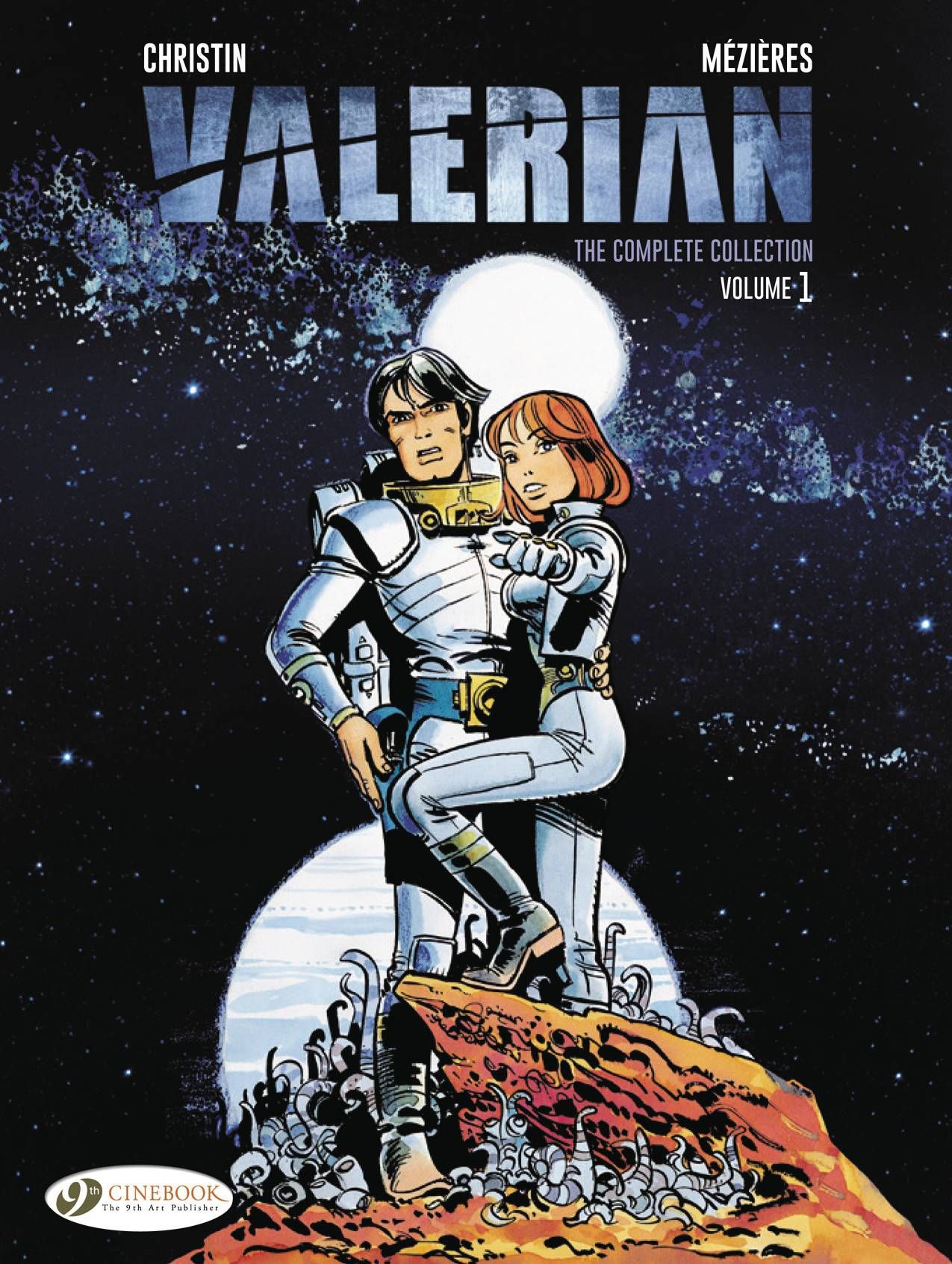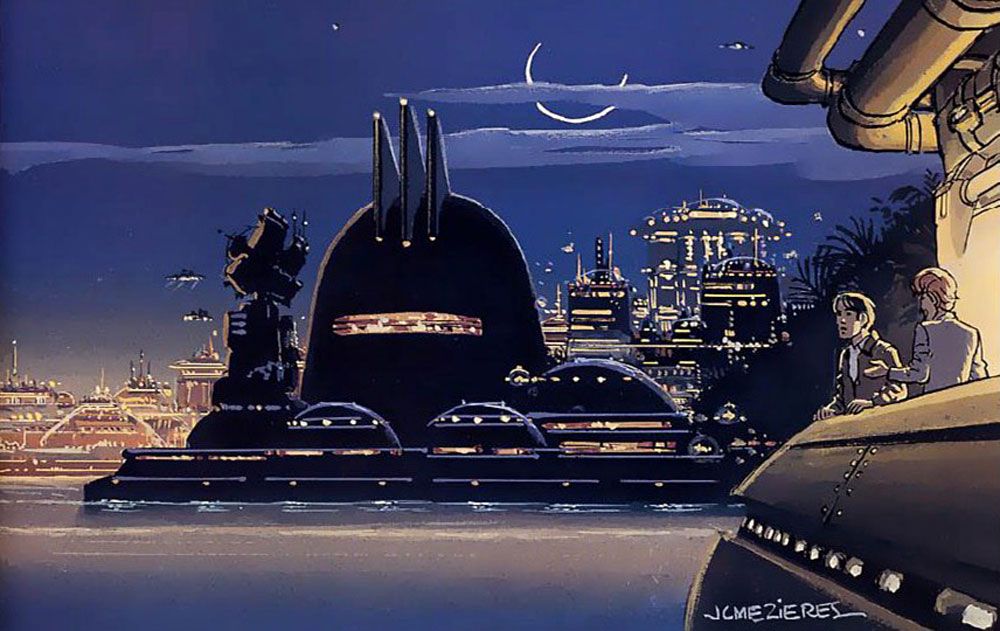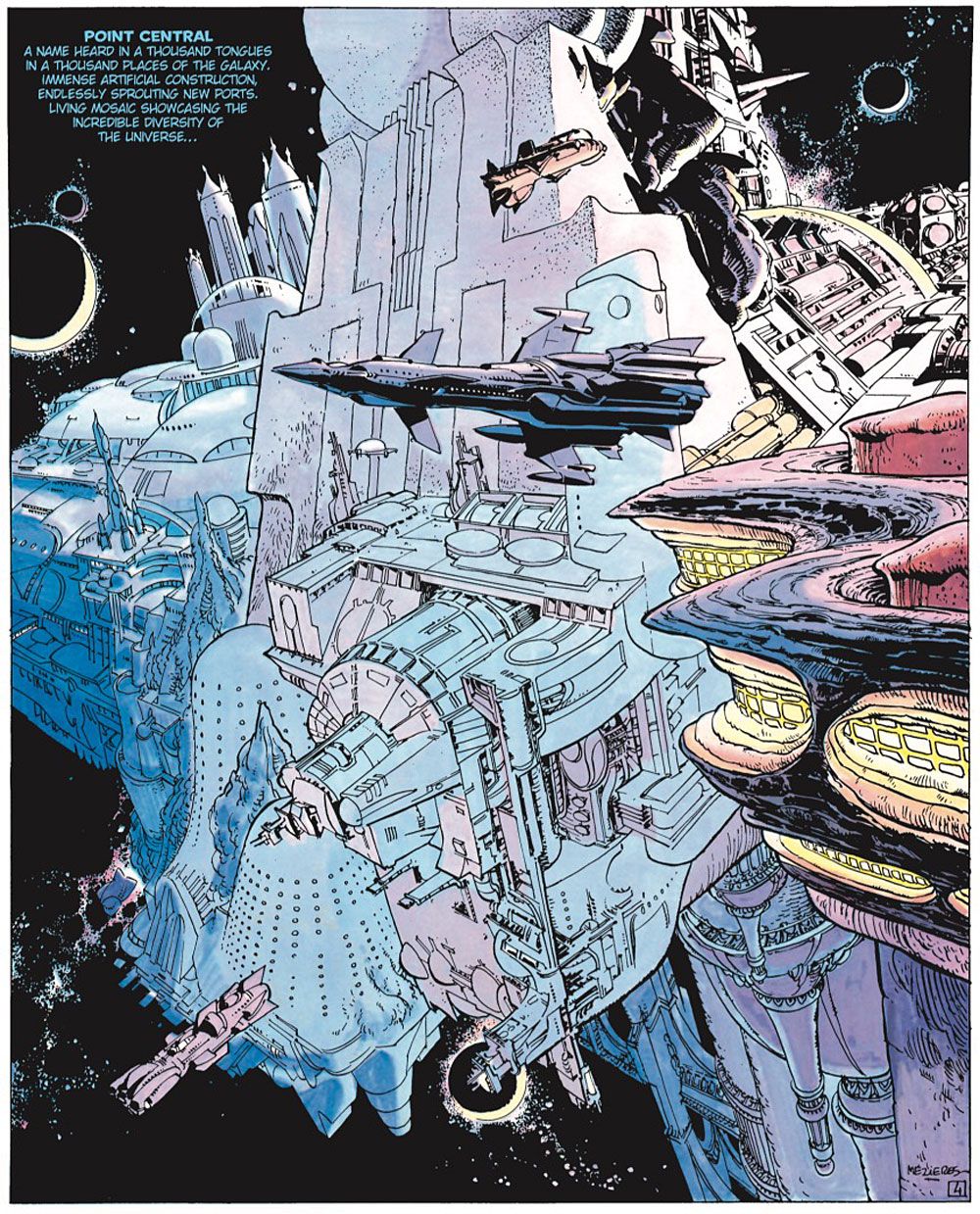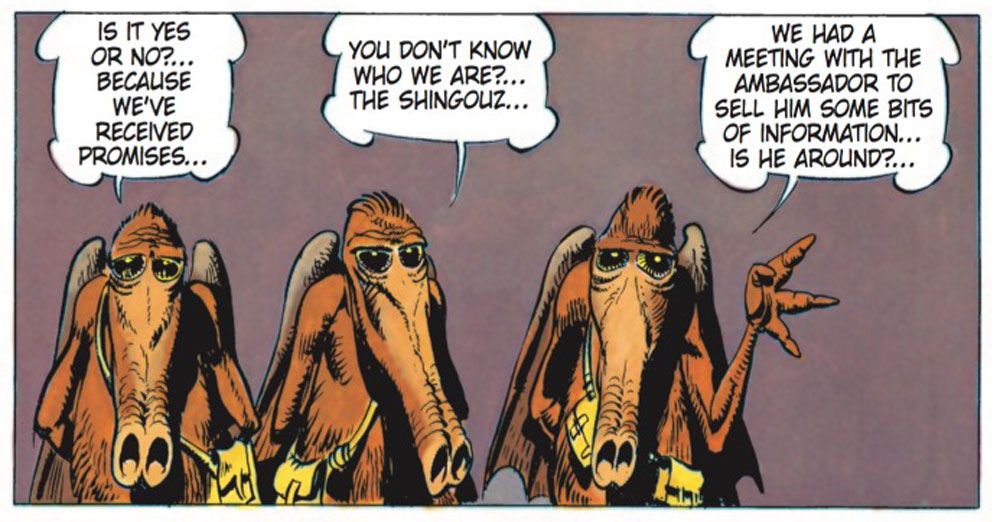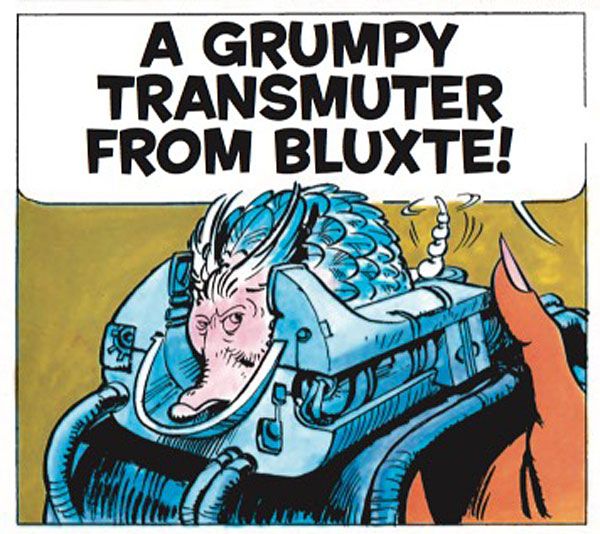When Luc Besson’s adaptation of the classic sci-fi comic Valerian lands in movie theaters this week, it'll be just a few months shy of the comic series' 50th anniversary.
Valerian first appeared in 1967 in the pages of Pilote magazine, an anthology series published in France. Written by Pierre Christin and illustrated by Jean-Claude Mézières, it tells the stories of Valerian and Laureline, two Spatio-Temporal Service agents, who work together for Earth's government in keeping the universe safe and the time stream clean
Yes, they're time cops.
Valerian is the action-oriented one, the prototypical muscular, square-jawed, good looking leading man. A bit like Han Solo, he has his rakish moments and some questionable decision-making skills. He can't help but get into the heat of the moment without thinking first, keeping things from his partner, and buying into his own stories a little too excitedly.
REVIEW: Valerian and the City of a Thousand Planets
He's paired with Laureline, who's smarter and more emotionally understanding, but still able to deliver an action beat when needed. She loves Valerian, though his actions are sometimes suspect in that department. But she's more than capable of fighting for herself, saving Valerian when he needs it, and kicking butt in general.
It happens a lot, actually.
In fact, in the story that the movie is based on, "Ambassador of the Shadows," the entire plot is that Valerian gets kidnapped and Laureline spends the issue running around the Point Central space station trying to save him.
In short, she is not your typical helpless damsel in distress.
Together, they explore the universe and get mixed up in crazy adventures along the way. Sparks often fly, usually from his stubborn insistence on leaping into action fighting against her natural instincts to be more peaceful. She's the perfect foil for him.
The series served to popularize the sci-fi genre in French comics and provided inspiration to countless other creators and movie series, the most notable being George Lucas' Star Wars.
The stories are short, punchy science fiction morality plays. It's not always about beating the bad guy, but about traveling to different worlds with different norms and making the best of bad (or at least questionable) situations. It's science fiction at its best, mirroring contemporary issues with thoughtful stories that challenge the reader, without getting preachy. Across the albums, the series has covered everything from feminism to diversity to environmentalism and beyond.
In large part, this is thanks to writer Pierre Christin, who studied politics in college just as much as he did the American sci-fi magazines of the 1950s and 1960s. Valerian and Laureline is his lighter work; his more serious exploration in politics and government come out in other projects, with different artists such as Enki Bilal.
RELATED: Valerian Introduces More of its Many Characters with New Poster Set
Valerian and Laureline is the sole series work of artist Jean-Claude Mézières. While he's done a handful of other short stories, he drew only these two space and time travelers for nearly 40 years across 22 volumes. Mézières also spent time working in development for television and movies, most notably The Fifth Element.
The Buyer's Guide to Valerian and Laureline
There are 21 individual albums available for purchase today
Currently, Cinebook publishes print versions of the albums in English. They are up to volume 17, which just came out a couple weeks ago.
Cinebook has also started printing omnibus versions of the series. Titled Valerian and Laureline: The Complete Collection, three volumes are currently available.
The first collects not just the first two volumes in the series, but also the very first Valerian story ever made, "Bad Dreams." Due to its brevity, it doesn't fill a standard album and has remained un-reprinted until now. It's as close to an origin story as you're going to get. This is where you learn how Valerian met Laureline in France hundreds of years ago, and why he brought her back with him.
The other omnibuses collect three albums at a go, in sequential order.
These collections also contain interviews with the creators and the movie's director, Luc Besson, along with biographical articles and short commentaries on each story.
RELATED: Valerian’s Stunning Final Trailer Unleashes Destruction
If you don't want to wait for the print editions, all 21 albums in the series are available digitally today through comiXology. For various rights reasons, the first 14 albums are under Cinebook's name in the catalog, while Europe Comics is listed as the publisher of albums 15 - 21.
There is a 22nd album that remains untranslated either in print or digital, though. Titled "Across the Pathways of Space," the French-language collection feature seven short stories in the Valerian universe done in 1969 and 1970.
They also recently printed a special 50th Anniversary edition of Pilote dedicated to Valerian, with short story contributions from a variety of acclaimed French cartoonists. It's not available in English.
Notable People, Places, and Things
While there's not a whole lot of continuity in the albums, there are characters and locations that seem to show up a lot. Here's a short list of some of them:
Galaxity: This is the home of earth's government, which is the basis of the Terran Galactic Empire. It's where Valerian and Laureline get their missions. Earth doesn't play home to the capital because of an atomic weapon that melted the polar ice caps and flooded the planet. There are some drastic changes to Galaxity in volumes 11 and 12 that impact the rest of the series.
Point Central: This space station is actually a collection of segments from different alien races that have glued themselves together. It's the Babylon 5 or the United Nations of the Valerian Universe. At the center lies the Hall of Screens, which is basically the UN's conference room, where everyone talks to each other via translated video screens. This is the main location for the Valerian movie, though it's been renamed "Alpha."
The Shingouz: A small long-nosed alien race who are great at smuggling information. They usually are seen in threes, and their marriages are even between three males and three females of their species. They weasel their way into a half dozen different books in this series. Laureline has a love/hate relationship with them.
Grumpy Transmuter from Bluxte: This is the small alien animal that basically poops money and jewels. Anything it eats, it can replicate. This makes it very valuable for creating new jewels and money. It first shows up in Ambassador of the Shadows, and appears in the movie.
Mr. Albert: He's the contact on "modern day" earth for Valerian, whenever he visits the planet. The definition of "modern day" seems silly to a time traveler, but it corresponds to the year the book is being published. He's first seen in 1980's Métro Châtelet, Direction Cassiopeia. He avoids action. He would prefer to be an information broker, and drink a fine bottle of wine.

